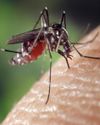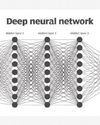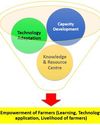
Hidden hunger is an alarming global tsunami and controlling this in any manner is an affordable opportunity to improve the lives of more than half of the world population especially developing countries (UNICEF report, 2017). New developments are leading to rising carbon levels making food less nutritious which brings nutrition crisis. In the current scenario, the paradox is while the number of undernourished people has gone down by one-third in the last decade, but the malnutrition is increasing to an alarming ratio and this could be related to the increase in Co2 level.
Hunger around the world is rising again, high CO2 level is jeopardizing the progress made to end the scourge of food insecurity. Why rising carbon levels are bad for Indians as it is making rice and wheat less nutritious, putting millions at risk of malnutrition. The antinutritional effects and environmental implications has instigated numerous studies and aimed at how to stabilize the plant nutrition. Gene editing is the need to solve this incumbency of nutrition.
Currently India is well poised to become the third largest economy in the coming decades though it is still notorious for being undernourished facing the major challenge of hidden hunger. Although we boast that India is set to become the youngest nation by 2020 with a huge workforce of 64%, the reality is the hidden hunger, which may be due to the rising carbon dioxide (CO2). The time is come where we have to address the nutrition security than the food hunger. High carbon dioxide leads to lower concentration of protein, iron, and zinc in the crops. Cereals and lentils are most affected if grown under polluted environment. In India millions of people are facing nutritional deficiencies because of rise in carbon dioxide. Rising carbon dioxide making staple food such as rice and wheat less nutritious.
この記事は Scientific India の November - December 2019 版に掲載されています。
7 日間の Magzter GOLD 無料トライアルを開始して、何千もの厳選されたプレミアム ストーリー、9,000 以上の雑誌や新聞にアクセスしてください。
すでに購読者です ? サインイン
この記事は Scientific India の November - December 2019 版に掲載されています。
7 日間の Magzter GOLD 無料トライアルを開始して、何千もの厳選されたプレミアム ストーリー、9,000 以上の雑誌や新聞にアクセスしてください。
すでに購読者です? サインイン

An insight into Chandipura virus in India
Recently lot of news regarding disease due to Chandipura virus has emerged in various newspapers/magazines. After reading the reports published it seems that thing is still brewing in the natures nest and it could affect mankind.

Why elephants never forget?
An elephant has a very large brain for its size and the 'temporal lobe' region responsible for memory is more developed with a greater number of folds - this results in powerful abilities to 'download' important survival data such as where to find food and water, and who is friend or foe.

Use of Algae for Wastewater Treatment Containing Heavy Metals
Wastewater treatment is a critical environmental issue particularly when it comes to the removal of heavy metals.

Nano priming Seeds: A Small Innovation Sparkling Big Advances in Germination
Nanopriming is an emerging agricultural technique where the seeds are treated with nanoparticles to improve their germination, growth, and overall performance.

Nobel Laureates in Physics 2024: Revolutionizing AlThe Physics Foundations Behind Machine Learning
This year's two Nobel Laureates in Physics have used tools from physics to develop methods that are the foundation of today's powerful machine learning.

Revolutionizing Biology: The 2024 Nobel Prize in Chemistry Celebrates Breakthroughs in Protein Design and Structure Prediction
The Nobel Prize in Chemistry 2024 is about proteins, life's ingenious chemical tools.

New findings on animal viruses with potential to infect humans
Scientists investigating animal viruses with potential to infect humans have identified a critical protein that could enable spillover of a family of organisms called arteriviruses.

Father-Daughter Team Decodes Mars' Alien Signal
There is no definitive answer to whether aliens exist, but there is a lot of work being done to find out:

Krishi Vigyan Kendras: Working for Farmer's Welfare
Krishi Vigyan Kendras (Farm Science Centres) are the District level institution serving as an agriculture knowledge resource & capacity development centre which plays indispensable role in front line extension regarding agriculture system in scientific way.

Sixth generation Computer: The future computing technology
We are in a transition towards a digital world, where everything will be dealt with in digital format.